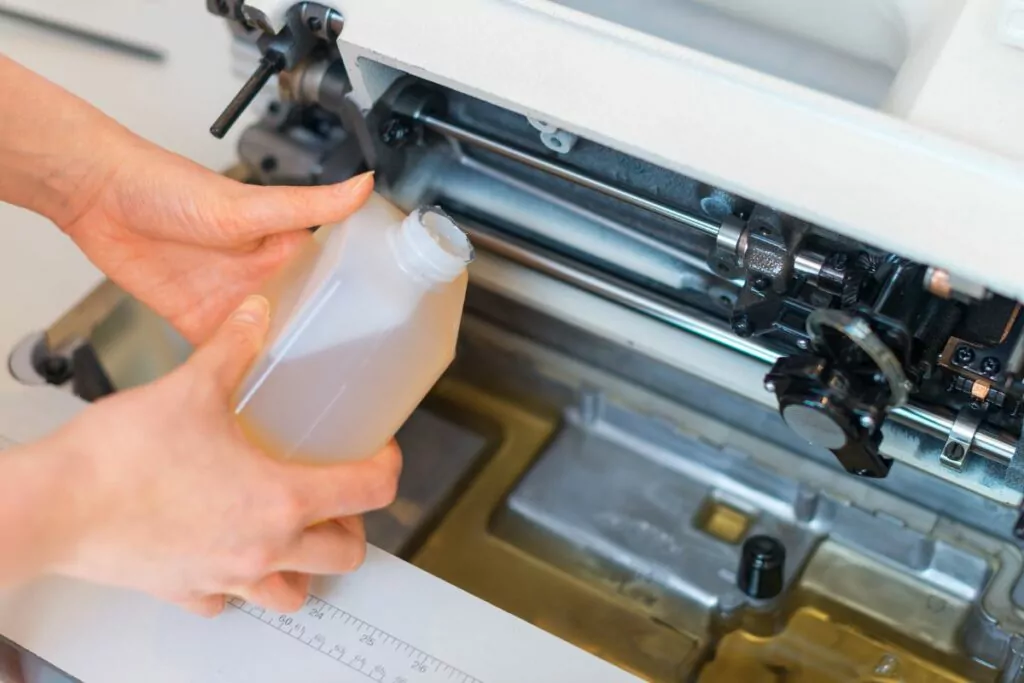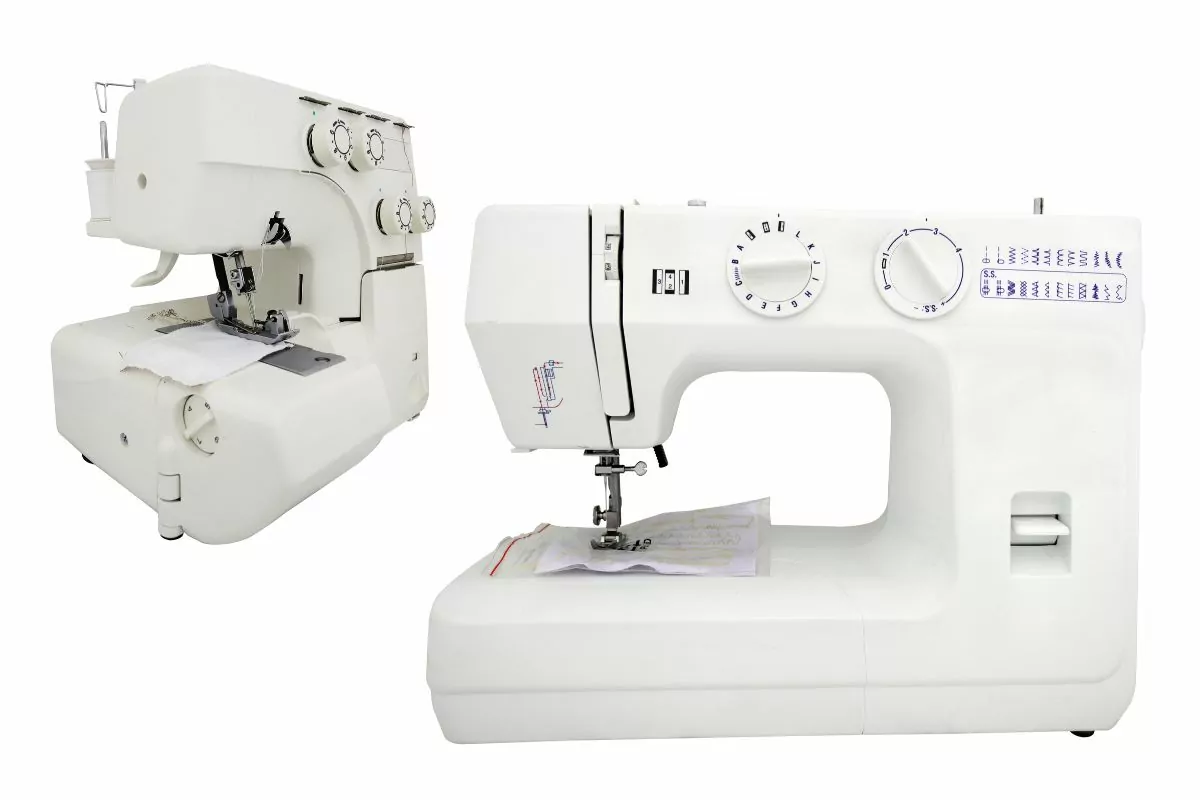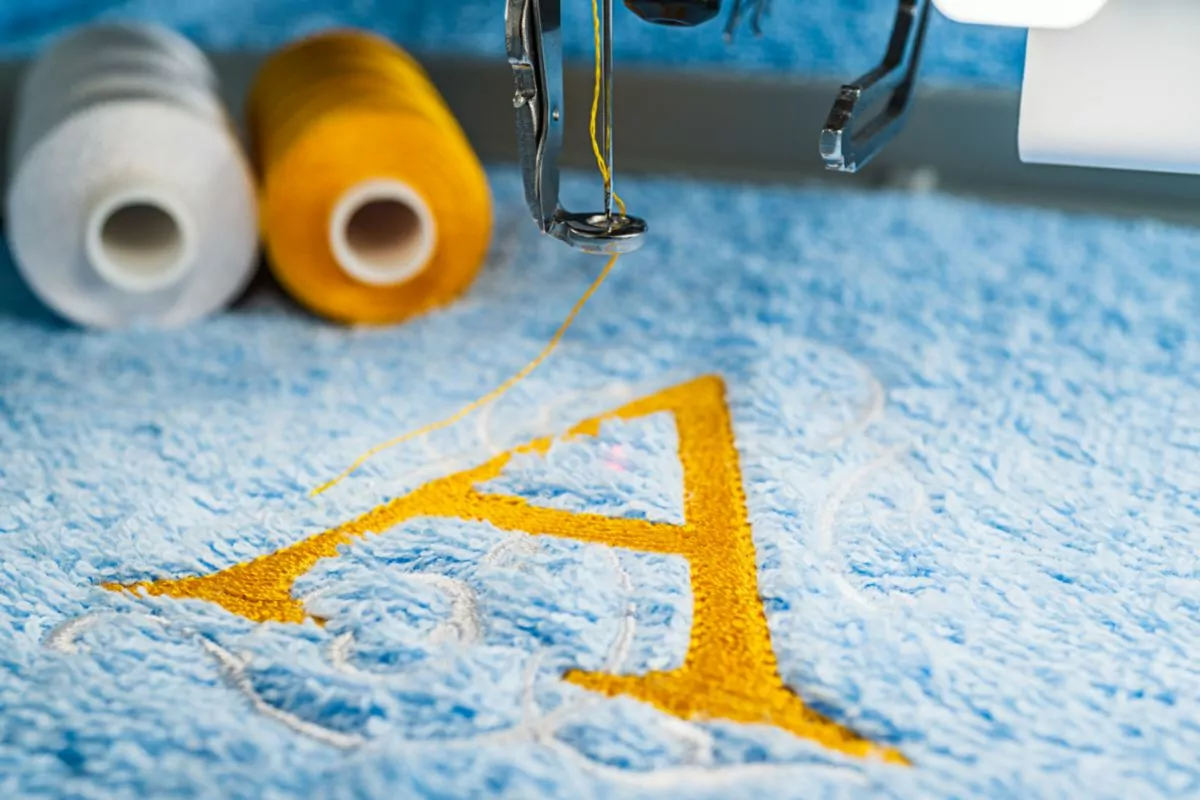Sewing machine maintenance is essential to keep your machine in good working condition for years to come.
If your sewing machine starts to make unusual noises, then it may need oiling. But what oil can you use? And what is sewing machine oil?

In this practical guide, we explain what sewing machine oil is made of, what type of oil you can use and how to apply the oil to get your sewing machine running smoothly.
What Is Sewing Oil Made Out Of?
Sewing machine oil is a specific type of oil that you can use to lubricate the components of your sewing machine.
This oil has a light viscosity which means that it doesn’t accumulate on a sewing machine’s small parts.
When you are looking for sewing machine oil, then make sure that you only buy oil that has been specifically designed for sewing machines.
Not all sewing machines need oiling. If your model needs regular oiling, then make sure that you follow the manufacturer’s instructions.
These sewing machines often also come with oil or specific oil recommendations, so it is a good idea to use this type of sewing machine oil for your device.
Types Of Sewing Machine Oil
Generally, there are three types of specific sewing machine oils. Each one has its advantages and disadvantages.
Whatever sewing machine oil type you want to use for your machine, always make sure that you use only oil specifically labeled suitable for sewing machines.
If you use mineral motor oil, cooking oil or other oil made for other purposes, then this could gum up your sewing machine causing essential components to malfunction.
Mineral Oil
Mineral oils are made from petroleum or petrochemicals. This type of oil is white and odorless. It is also the most effective when it comes to lubricating your sewing machine.
This is the main reason why most sewing machine oils are based on petrochemicals.
Synthetic Oil
Synthetic oils are an artificial alternative to mineral oils. You can use synthetic oil on painted surfaces, rubber or plastic which makes it perfect for sewing machines.
However, synthetic sewing machine oil is usually more expensive than popular mineral oil.
Natural Oil
Natural oils use mostly natural ingredients, such as ester oils, silicone and jojoba oil. Although these oils are more sustainable and environmentally friendly, they aren’t as effective as synthetic or mineral oils.
Can You Use WD40 As Sewing Machine Oil?
Yes, you can use WD40 as a sewing machine oil. This is a fantastic go-to lubricant that allows you to clean grease and dirt from different surfaces, including your sewing machine.
Plus WD40 is so versatile that you can also use it elsewhere in your home.
How To Use Sewing Machine Oil
Oiling your sewing machine isn’t very difficult. You can usually find step-by-step instructions on how to apply oil to individual parts of your machine in the manufacturer’s handbook.
Different machines required different types of oil and individual parts to be oiled. As a rule of thumb, most moving metal parts on your sewing machine need oiling occasionally.
These components include the feed dogs, the metal bobbin case and the shaft where the needle moves.
You should pay special attention to any areas where two metal surfaces come into contact with each other because the wear is much stronger here. You don’t need to oil any plastic components of your machine.
Depending on your sewing machine, some machines come with small holes on the outside where you can inject oil into the machine.
You just need to ensure that you don’t seal any of these openings to avoid problems with your sewing machine.
Top Tips On Oiling A Sewing Machine
It’s quick and easy to oil a sewing machine. Here are some top tips to keep your machine running smoothly.
Follow Your Machine’s Instructions
Every sewing machine requires individual maintenance. Check your sewing machine’s detailed instructions on where and how to apply the oil.
Many sewing machine manuals also advise on how often you need to oil your machine.
Always Unplug Your Machine
Before you start oiling your sewing machine, make sure that it is unplugged.
Be Prepared To Disassemble Parts
Some sewing machines require the disassembly of specific components to get to the parts you need to oil. You may need other tools for this, such as a screwdriver.
Your machine’s manufacturer manual should give you step-by-step instructions on how to disassemble the parts and apply the oil.
Remove Dust First
It is good maintenance practice to brush your sewing machine’s parts with a fin brush to remove any dust or lint before you apply the oil.
Use The Right Type Of Oil
Make sure that you use only specifically labeled sewing machine oil that hasn’t expired. Sewing machine oil that has gone bad typically looks yellow and thick.
How Often Should You Oil Your Sewing Machine?
Your sewing machine’s instruction manual will tell you how often you should oil your machine. As a good rule of thumb, it is a good idea to clean and oil your sewing machine every week.
Depending on how often you use your sewing machine, you may want to oil it more often. In fact, some sewing machine experts even recommend oiling your machine after every 8 hours of sewing.
How To Make Your Own Sewing Machine Oil?
While sewing machine oil isn’t too expensive, it can be great fun and more economical to make your own homemade sewing machine oil.
Just mix a ⅓ cup of jojoba oil with a tablespoon of silicon oil and a tablespoon of ester oil. This should give you a smooth oil that keeps your sewing machine running.
However, different sewing machines require different types of oil, so this homemade mixture does not work for every sewing machine.
Final Thoughts
Oiling your sewing machine is an essential part of maintaining your machine in good working order. Just check your machine’s manual to find out if your sewing machine needs oiling.
- How To Sew Fabrics Together - June 5, 2023
- How Many Stitches Per Inch? - June 5, 2023
- How Long Does It Take To Sew A Dress? - June 5, 2023











